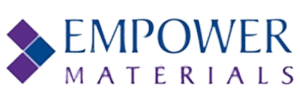Empower Materials Inc. is the producer of QPAC®, the world's cleanest thermally decomposable organic/sacrificial binders. QPAC® cleanly decomposes into CO2 and water in many types of atmospheres and leaves virtually no residue. This property contributes to QPAC®'s widespread usage in many demanding applications.
.jpg)
Image Credits: maxuser/shutterstock.com
QPAC® poly(alkylene carbonate) copolymers are a unique family of innovative thermoplastics representing a true break-through in polymer technology. While traditional plastics have been primarily petroleum-based, these materials are derived from carbon dioxide and are produced through the copolymerization of CO2 with one or more epoxides. The resultant polymers are amorphous, clear, readily processible, and have long-term mechanical stability. They are also environmentally friendly by consuming 50% fewer petrochemicals, as compared to other polymers which are 100% petrochemical-based. In addition, they may exhibit biodegradable properties consistent with an environmentally friendly binder.
QPAC® 25, polyethylene carbonate, and QPAC® 40, polypropylene carbonate, are the two most widely used products within our family of binders. However, there is a wide range of QPAC® polymers possible by varying the epoxide monomer or using blends of epoxides to produce a specific reaction. Our technical group has the expertise to effectively work with you to develop the appropriate product for your application.
Production Capabilities of Empower Materials
Empower Materials is the world's only commercial manufacturer of polyalkylene carbonates. Empower Materials can make large quantities (1000's kgs) of QPAC® 25, polyethylene carbonate, QPAC® 40, polypropylene carbonate, and QPAC® 100- a terpolymer of polypropylene carbonate and polycyclohexene carbonate.
Additionally, a wide range of other QPAC® polymers is possible via the substitution of oxiranes (epoxides) using the same production equipment configuration. In addition to QPAC® 25, QPAC® 40, and QPAC® 100 (polypropylene carbonate, polyethylene carbonate, and polypropylene carbonate/polycyclohexene, respectively). The following have been successfully synthesized on pilot scale equipment:
QPAC® PBC (poly-butylene-carbonate) and QPAC® 130 (poly-cyclohexene carbonate)
Empower Materials also has the technology to modify the polymer's molecular weight across a very broad range.
Key Benefits of QPAC 40 Polypropylene Carbonate Organic Binders
Key Benefits of QPAC®40 polypropylene carbonate include:
- Excellent adhesion and improved lubricity
- Co-firing in any atmosphere without oxidation
- Complete and clean burnout at low temperatures
- Products of combustion are only carbon dioxide & water
Empower Materials is a materials company making a family of high performance, biodegradable plastics polymers used primarily as sacrificial binders. These sacrificial binders called QPAC are used in many highly technical applications. Empower Materials makes a family of QPAC polyalkylene carbonates that degrade completely and uniformly into environmentally benign products making it excellent for high-performance applications including precise assembly of micro and nanoscale devices.
QPAC Binder for Metallic Pastes
One new exciting application area for QPAC is as an organic binder for metallic pastes. QPAC®40 polypropylene carbonate is currently being used as a binder in electrode pastes. Electrode pastes containing QPAC binder have significant benefits because of their low carbon residual levels which lead to reduced defect rates and other electrical quality issues.
Additional Applications of QPAC Organic Binders
Additionally, QPAC binder is used in terminal pastes and solar pastes. QPAC has been successfully used as a binder in copper pastes, nickel pastes, silver pastes, and tungsten pastes for many electronic and solar applications.
Summary
Again, the QPAC binder leads to both improved mechanical properties and efficiency of systems using QPAC in their metallic paste formulations.

This information has been sourced, reviewed and adapted from materials provided by Empower Materials.
For more information on this source, please visit Empower Materials.